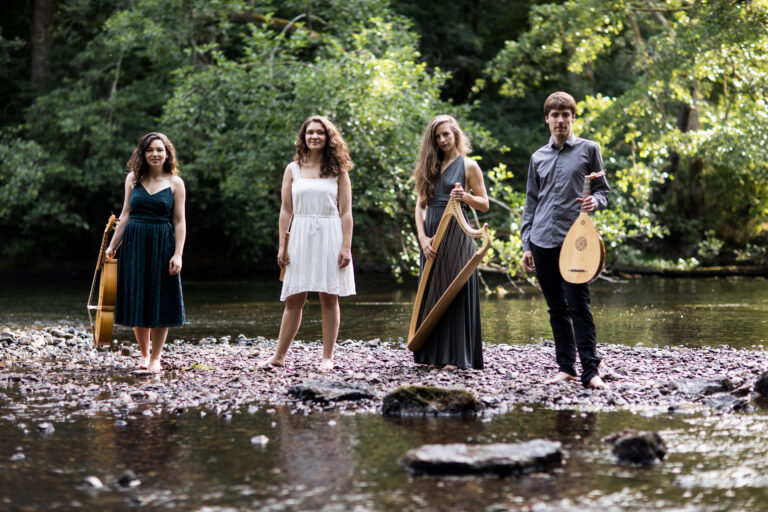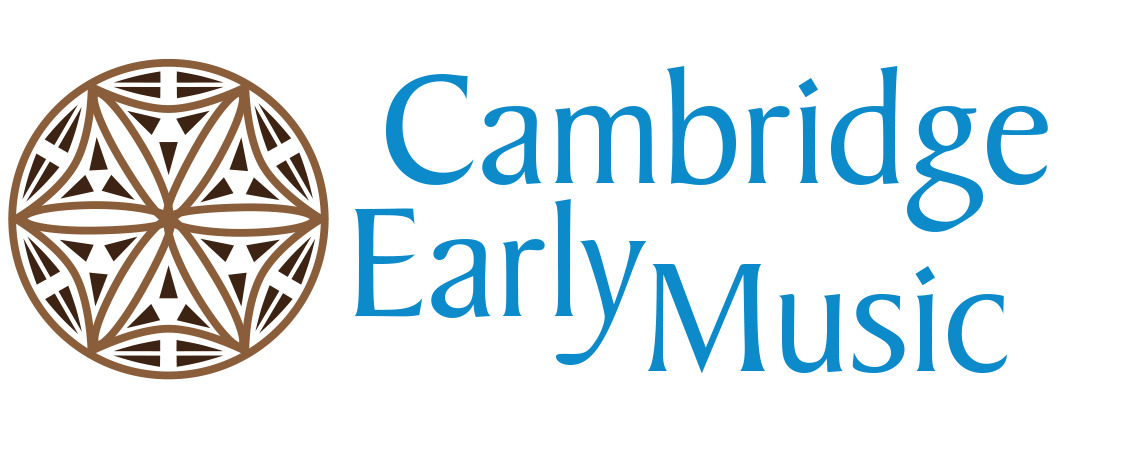ApotropaïK

Ensemble ApotropaïK won the Cambridge Early Music Prize at the York Early Music International Young Artists Competition 2022. They also won the EEEmerging+ Prize and the York Early Music Festival Friends Prize.
The figure of the ‘Bella Donna’ echoes courtly love, which praises an idealized and coveted woman. However, woman can also embody the notion of a flower which, though sublime, is also poisonous and even deadly. In the field of botany, belladonna or Deadly Nightshade presents an enticing but poisonous fruit, also well known to witches for the preparation of their hallucinogenic ointments. What more appropriate metaphor could there be to illustrate the ambiguity of the female figure in the medieval imagination?
Exploring the linguistic and cultural diversity of Europe in the 13th and 14th centuries, this programme reveals a mosaic of fascinating female figures. Thus, the secular songs performed here depict complex psychological portraits. By their actions or crimes, these women overturn the existing world order. The sacred repertoire also spotlights fascinating female characters. The summoned means of expression are similar, whether used to sing of the beloved woman in the tradition of courtly lyricism or in praise of the Virgin Mary, as in the famous Cantigas de Santa María. ‘Temperance, Charm, Torment’: linked by the common thread of these female figures, diverse styles of music emerge. Starting from a canso composed by a trobairitz (the troubadour’s female alter ego), the programme progresses through monodies and polyphonic works of the 13th and 14th centuries.
Ensemble ApotropaïK will demonstrate their approach to the repertoire of the late Middle Ages, and work with members of the Cambridge Early Music Consort on repertoire from their programme. Audience are welcome to observe. Admission free to St Catharine´s College Chapel from 2 to 4pm.
This concert is in collaboration with the Kellaway Concert Series at St Catharine’s College.

PROGRAMME
First part : Temperance | |
A chantar m’er de so qu’eu no volria [canso] | Comtessa de Dia (fin XIIe-déb. XIIIe s.) |
Can l’erba fresch’ [instrumental] | Bernart de Ventadorn (c. 1130/40-c. 1190/1200) |
Santa Maria leva Cantiga de Santa María, n° 320 | Anonymous |
Honte, paour, doubtance de meffaire [ballade] | Guillaume de Machaut (c. 1300-1377) |
Pièce sans titre, f. 49 v. [instrumental] Codex Faenza (déb. xve s.), Faenza – Biblioteca Comunale, MS 117 | Anonymous |
La belle se siet au piet de la tour | Guillaume Dufay (1397-1474) |
Second part : Charm | |
Santa Maria amar Cantiga de Santa María, n° 7 | Anonymous |
Ave Maris Stella Codex Faenza | Anonymous |
Medée fu en amer veritable [ballade] Codex Chantilly (fin. XIVe/déb. XVe s.), Chantilly – Musée Condé, MS 564 | Anonymous |
Third part : Torment | |
Phyton, le merveilleus serpent [ballade] | Guillaume de Machaut |
O Crudel Donna [madrigal] Codex Rossi (c. 1370), Roma – Biblioteca Apostolica Vaticana, MS Rossi 215 | Anonymous |
Ha, Fortune, trop as vers moy grant tort [ballade] Codex Chantilly | Anonymous |
Isabella [estampie – instrumental] London – British Library, Add. 29987 (c. 1400) | Anonymous |
Other events which you may like
The Fair Maiden
The Sixteen
Fri 19 Dec 2025 19:30 free to £40.00
Trinity College Chapel
Cubaroque: Songs from Two Golden Ages
Mulroy Kenny Carr
Thu 12 Feb 2026 19:30 free to £25.00
Great St Mary's Church
The Forgotten Scarlatti
Armonico Consort
Fri 6 Mar 2026 19:30 free to £40.00
Trinity College Chapel



